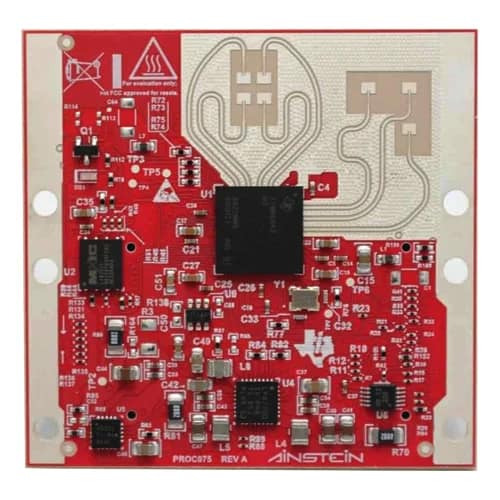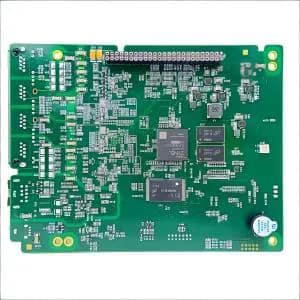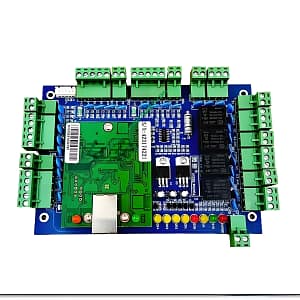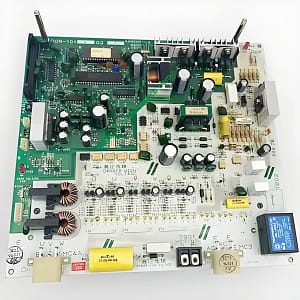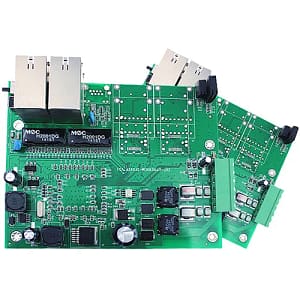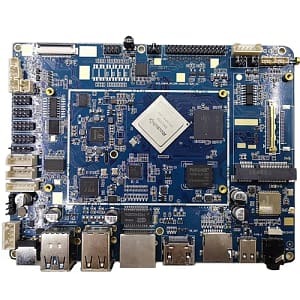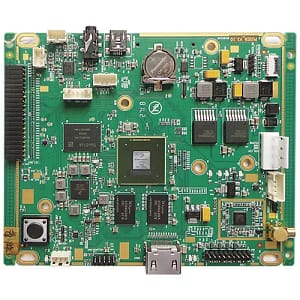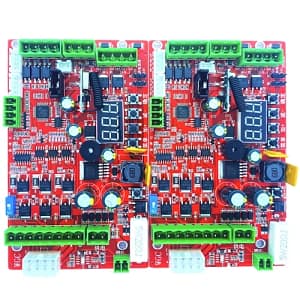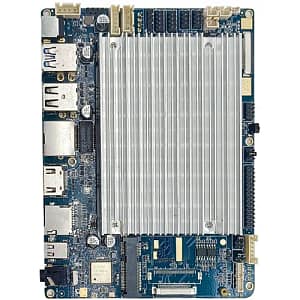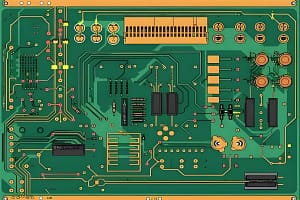ภาพรวม
คลื่นมิลลิเมตร: คลื่นแม่เหล็กไฟฟ้าที่มีความยาวคลื่น 1 ถึง 10 มิลลิเมตรเรียกว่าคลื่นมิลลิเมตร. พวกมันอยู่ในช่วงความยาวคลื่นที่ไมโครเวฟและคลื่นอินฟราเรดอยู่ซ้อนทับกัน, ดังนั้นพวกเขาจึงมีลักษณะของทั้งสองสเปกตรัม. ทฤษฎีและเทคโนโลยีของคลื่นมิลลิเมตรคือการขยายไมโครเวฟไปสู่ความถี่สูงและการพัฒนาของคลื่นแสงเป็นความถี่ต่ำ.
รู้เบื้องต้นเกี่ยวกับ mmwave
คำนิยาม
ไม่มีคำจำกัดความที่แม่นยำของแถบความถี่คลื่นมิลลิเมตร. โดยปกติ, คลื่นแม่เหล็กไฟฟ้าในโดเมนความถี่ของ 30300กิกะเฮิรตซ์ (ความยาวคลื่น 110มม) เรียกว่าคลื่นมิลลิเมตร. ตั้งอยู่ในช่วงความยาวคลื่นที่ไมโครเวฟและคลื่นอินฟราเรดที่ซ้อนทับกัน, ดังนั้นจึงมีลักษณะสองประเภทของสเปกตรัม. ทฤษฎีและเทคโนโลยีของคลื่นมิลลิเมตรคือการขยายไมโครเวฟไปสู่ความถี่สูงและการพัฒนาของคลื่นแสงเป็นความถี่ต่ำ.

การพัฒนา
ในเดือนมิถุนายน 15, 2020, Liu Yunjie, นักวิชาการของ Chinese Academy of Engineering, กล่าวว่าการสื่อสารเครือข่ายของหนานจิงและห้องปฏิบัติการความปลอดภัยสีม่วงม่วงได้พัฒนาคลื่น CMOS มิลลิเมตรแบบบูรณาการอย่างสมบูรณ์แบบ 4 ช่องทางเฟสชิป.
ลักษณะคลื่นมิลลิเมตร
ข้อดี
- แบนด์วิดท์ที่กว้างมาก: โดยทั่วไปเชื่อว่าช่วงความถี่คลื่นมิลลิเมตรคือ 26.5-300GHz, และแบนด์วิดท์สูงถึง 273.5GHz. มากกว่า 10 เป็นครั้งแบนด์วิดท์เต็มรูปแบบจาก DC ถึงไมโครเวฟ. แม้จะพิจารณาการดูดซึมในบรรยากาศ, สามารถใช้หน้าต่างหลักได้เพียงสี่บานเมื่อแพร่กระจายในบรรยากาศ, แต่แบนด์วิดท์ทั้งหมดของหน้าต่างทั้งสี่นี้สามารถเข้าถึงได้ 135GHz, ซึ่งก็คือ 5 เวลารวมของแบนด์วิดท์ของแถบไมโครเวฟด้านล่าง. นี่เป็นสิ่งที่น่าสนใจอย่างมากในทรัพยากรความถี่ที่แน่นหนาของวันนี้.
- คานแคบ: ลำแสงคลื่นมิลลิเมตรแคบกว่าลำแสงไมโครเวฟภายใต้ขนาดเสาอากาศเดียวกัน. ตัวอย่างเช่น, เสาอากาศขนาด 12 ซม. มีความกว้างของลำแสง 18 องศาที่ 9.4 กิกะเฮิรตซ์, แต่เท่านั้น 1.8 องศาที่ 94 กิกะเฮิรตซ์. ดังนั้น, เป็นไปได้ที่จะแยกแยะวัตถุขนาดเล็กที่อยู่ใกล้กันมากขึ้นหรือสังเกตรายละเอียดของวัตถุอย่างชัดเจนยิ่งขึ้น.
- ลักษณะทุกสภาพอากาศ: เมื่อเทียบกับเลเซอร์, การแพร่กระจายของคลื่นมิลลิเมตรได้รับผลกระทบน้อยกว่ามากจากสภาพอากาศ.
- miniaturization ง่าย: เมื่อเทียบกับไมโครเวฟ, ส่วนประกอบคลื่นมิลลิเมตรมีขนาดเล็กกว่ามาก. ดังนั้นระบบ mmwave จึงง่ายต่อการย่อขนาด.
ข้อบกพร่อง
- การลดทอนการลดทอนในบรรยากาศ: การลดทอนการขยายพันธุ์นั้นร้ายแรงในบรรยากาศ.
- ความแม่นยำในการประมวลผลสูง: ความแม่นยำในการประมวลผลของอุปกรณ์นั้นสูง.
ลักษณะการแพร่กระจายของคลื่นมิลลิเมตร
คลื่นมิลลิเมตรมีแอพพลิเคชั่นจำนวนมากในสาขาการสื่อสาร, เรดาร์, การสำรวจระยะไกล, และดาราศาสตร์. เพื่อที่จะออกแบบและพัฒนาระบบคลื่นมิลลิเมตรด้วยประสิทธิภาพที่ยอดเยี่ยม, มีความจำเป็นที่จะต้องเข้าใจลักษณะการแพร่กระจายของบรรยากาศของคลื่นมิลลิเมตรภายใต้เงื่อนไขทางอุตุนิยมวิทยาที่แตกต่างกัน. ปัจจัยที่มีผลต่อลักษณะการแพร่กระจายของคลื่นมิลลิเมตรส่วนใหญ่รวมถึง: การดูดซับโมเลกุล (ออกซิเจน, ไอน้ำ, ฯลฯ), และสิ่งแวดล้อม (รวมถึงพืชพรรณ, พื้น, อุปสรรค, ฯลฯ). ผลรวมของปัจจัยเหล่านี้จะทำให้สัญญาณคลื่นมิลลิเมตรถูกลดทอน, กระจัดกระจาย, เปลี่ยนเส้นทางโพลาไรซ์และการแพร่กระจาย, จากนั้นแนะนำเสียงรบกวนใหม่ในระบบคลื่นมิลลิเมตร. ปัจจัยเหล่านี้จะส่งผลกระทบอย่างมากต่อการทำงานของระบบ mmwave, ดังนั้นเราต้องศึกษาลักษณะการแพร่กระจายของ mmwave ในรายละเอียด.
ภาพรวมของเรดาร์คลื่นมิลลิเมตร
ในช่วงไม่กี่ปีที่ผ่านมา, ด้วยความต้องการที่เพิ่มขึ้นสำหรับระบบคลื่นมิลลิเมตร, เทคโนโลยีคลื่นมิลลิเมตรได้สร้างความก้าวหน้าครั้งสำคัญในการพัฒนาเครื่องส่งสัญญาณ, ผู้รับ, เสาอากาศ, และอุปกรณ์คลื่นมิลลิเมตร. เป็นผลให้, เรดาร์คลื่นมิลลิเมตรได้เข้าสู่ขั้นตอนใหม่ของแอพพลิเคชั่นต่างๆ.
ลักษณะของเรดาร์คลื่นมิลลิเมตร
ประโยชน์หลัก
- วงดนตรีความถี่ที่กว้างมาก: เหมาะสำหรับการประมวลผลสัญญาณบรอดแบนด์ต่างๆ.
- คานแคบที่มีทิศทางที่ดี: ให้ความละเอียดเชิงพื้นที่สูงมากและความแม่นยำในการติดตามสูง.
- แบนด์วิดธ์ Doppler กว้าง: ให้ความละเอียด Doppler ที่ดีและความแม่นยำในการวัดความเร็วสูง.
- ผลกระทบต่ำจากความยุ่งเหยิงของพื้นดิน: ส่งผลให้ประสิทธิภาพการติดตามระดับความสูงต่ำดี.
- ลักษณะการกระเจิงที่ละเอียดอ่อน: ปรับปรุงการเลือกปฏิบัติหลายเป้าหมายและความสามารถในการจดจำเป้าหมายและคุณภาพการถ่ายภาพ.
- ยากที่จะสกัดกั้น: การปล่อยลำแสงแคบทำให้ศัตรูสกัดกั้นในการตอบโต้ทางอิเล็กทรอนิกส์เป็นเรื่องยาก.
- ฟังก์ชั่นต่อต้านการสุขภาพ: เนื่องจากการสะท้อนเชิงมุมที่เกิดจากส่วนที่ไม่สม่ำเสมอของเครื่องบินล่องหน, เพิ่มพื้นที่สะท้อนที่มีประสิทธิภาพ.
- ความสามารถในการเจาะ: เมื่อเทียบกับเลเซอร์และอินฟราเรด, คลื่นมิลลิเมตรสามารถเจาะควัน, ฝุ่น, และหมอก, และทำงานตลอดเวลา.
ข้อ จำกัด
ข้อเสียของเรดาร์คลื่นมิลลิเมตรส่วนใหญ่ได้รับผลกระทบจากการลดทอนในบรรยากาศและการดูดซึม, จำกัด ช่วงการดำเนินงานปัจจุบันเป็นส่วนใหญ่ภายใน 10 กิโลเมตร. นอกจากนี้, เมื่อเทียบกับเรดาร์ไมโครเวฟ, ส่วนประกอบและชิ้นส่วนของเรดาร์คลื่นมิลลิเมตรปัจจุบันผลิตขึ้นด้วยผลผลิตต่ำ. อุปกรณ์จำนวนมากยังต้องเคลือบด้วยทองคำหรือเงินในแถบความถี่คลื่นมิลลิเมตร, เพิ่มค่าใช้จ่าย.
เสาอากาศคลื่นมิลลิเมตร
เสาอากาศแตร
เสาอากาศฮอร์นเกิดขึ้นโดยค่อยๆขยายและขยายการเปิดของท่อนำคลื่นโลหะ. พวกมันใช้กันอย่างแพร่หลายในแถบคลื่นไมโครเวฟและคลื่นมิลลิเมตรเนื่องจากโครงสร้างที่เรียบง่าย, วงดนตรีความถี่กว้าง, ผลิตได้ง่าย, และการปรับที่สะดวก. เสาอากาศฮอร์นยังใช้ในอุปกรณ์การรักษาคลื่นมิลลิเมตร.
เสาอากาศ microstrip
เสาอากาศ microstrip, หรือเสาอากาศพิมพ์, ถูกนำมาใช้กันอย่างแพร่หลายในวงคลื่นเซนติเมตรและต่อมาขยายไปยังแถบคลื่นมิลลิเมตร. การขยายตัวนี้ไม่ได้เป็นการลดสัดส่วนเพียงอย่างเดียว แต่แสดงถึงแนวคิดและการพัฒนาใหม่. อย่างไรก็ตาม, เสาอากาศ microstrip คลื่นมิลลิเมตรประสบปัญหาสำคัญสองประการ: การสูญเสียสายส่งที่เพิ่มขึ้นและความทนทานต่อมิติที่เข้มงวด.
เสาอากาศคลื่นรั่ว
เสาอากาศประเภทนี้แผ่รังสีพลังงานเนื่องจากโครงสร้างที่ไม่ต่อเนื่องเมื่อคลื่นแม่เหล็กไฟฟ้าถูกส่งไปตามโครงสร้างแบบเปิด.
บริการ UGPCB
XWR6843 MMWAVE Sensing Device Assembly PCB Assembly
UGPCB ให้บริการอุปกรณ์ประกอบการตรวจจับ XWR6843 mmwave. ในฐานะโรงงานประกอบ PCBA แบบครบวงจรที่มีประสบการณ์ในอุตสาหกรรมอาวุโส, ยินดีต้อนรับคำถาม.
 โลโก้ UGPCB
โลโก้ UGPCB

